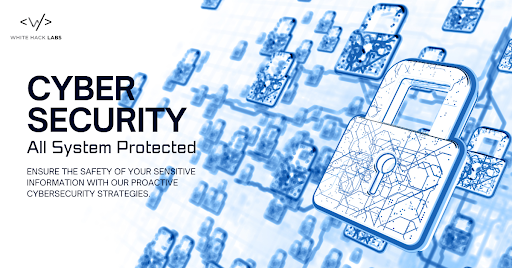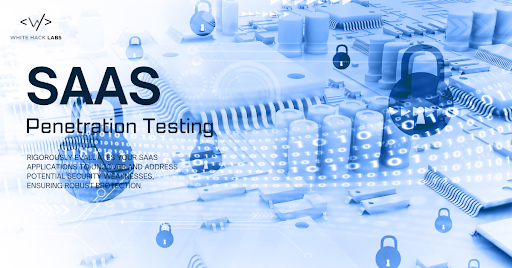
Introduction
Penetration testing is a proactive way for cybersecurity defenders to outmanoeuvre adversaries in the complex dance between them. The scoping phase is unquestionably the most fundamental element in this cybersecurity tango. Organizations lay the groundwork for a penetration test that finds vulnerabilities and fortifies the cornerstones of digital resilience by establishing boundaries, making objectives clear, and adjusting to the ever-changing nature of technology.
Setting the Stage: The Crucial Role of Scoping
The scoping process acts as a compass in the large field of cybersecurity, directing the penetration testing team through the complex digital world of an organization. It entails specifying the parameters of the evaluation and the networks, systems, and applications included in the test's scope. However, scoping is more than just an administrative chore; it's the foundation that establishes the atmosphere for the whole penetration testing project.
Understanding the organization's objectives, risk tolerance, and the vital assets that must be protected are all intrinsically tied to the scoping process. It's a team effort that needs feedback from both technical and non-technical stakeholders. Through workshops, talks, and constant communication, the scoping process is transformed into a collaborative process that synchronizes the testing goals with the organization's cybersecurity strategy.
The Dynamic Nature of Scoping: An Iterative Journey
Scoping is a continuous, iterative process in the quickly evolving cybersecurity sector, where organizational goals and technological advancements constantly change. Regular evaluations and scope modifications are essential to ensure that the penetration test remains relevant to the evolving risk landscape of the company.
Establishing boundaries in today's complex and interconnected IT settings can be difficult. The advent of cloud technologies and reliance on third-party services further contribute to the intricacies of scoping. It requires a meticulous understanding of the organization's digital footprint to avoid overlooking critical attack surfaces.
The Challenges and Best Practices of Scoping
Scoping is an essential first step, but it's difficult. Establishing distinct borders is a problem that organizations frequently face, particularly in intricately linked IT environments. Modern systems are so intertwined that it can be difficult to distinguish between internal and external assets. Therefore, this needs to be carefully considered before scoping a project.
To address these challenges and ensure an effective scoping process, organizations should adopt best practices:
Collaborative Workshops: Hold workshops with technical and non-technical stakeholders to map the organization's resources and define the scope jointly.
Asset Inventory: Ensure that your asset inventory, which includes servers, apps, and network devices, is kept up to date. This guarantees an accurate depiction of the organization's attack surface and provides a basis for scoping.
Continuous Communication: Ensure the penetration testing team and essential stakeholders can communicate freely. Frequent updates and conversations aid in adjusting the scope of modifications in the company's infrastructure.
Beyond Scoping: A Holistic Approach to Penetration Testing

Even though scoping prepares the ground for a penetration test, it's critical to approach the evaluation from an all-encompassing perspective. The following actions include intelligence gathering and surveillance and vulnerability research and exploitation, working together to strengthen an organization's defenses.
One prominent participant in the cybersecurity space, White Hack Labs, stresses the value of approaching penetration testing holistically. Their seasoned professionals know that scoping is a crucial component of an ongoing cybersecurity strategy rather than a stand-alone endeavor. Coordinating testing objectives with organizational goals guarantees that each penetration test is a calculated step towards a more secure and resilient digital environment.
The Impact of Scoping on Resource Optimization, Risk Prioritization, and Realistic Simulation
The significance of scoping extends beyond its role as a compass; it influences resource optimization, risk prioritization, and the realistic simulation of cyber threats.
Resource Optimization: A well-defined scope allows organizations to allocate resources effectively. This prevents the penetration test from becoming an exhaustive and resource-draining exercise, ensuring a focused approach.
Realistic Simulation: A precisely scoped test allows testers to simulate real-world scenarios, mirroring the paths that an actual attacker might take. This authenticity enhances the test's relevance and provides actionable insights.
Risk Prioritization: Not every vulnerability presents an organization with the same risk. By helping to prioritize risks according to their possible impact, the scope enables stakeholders to take care of the most pressing problems first.
Continuous Improvement: Adapting to the Dynamic Cybersecurity Landscape

The scoping process is not merely a static exercise but rather an ongoing development process in the constantly evolving field of cybersecurity. White Hack Labs invests a lot of money in research and development to ensure that their scoping techniques change to reflect new threats and technological advancements.
Their dedication to ongoing development reflects their awareness of the dynamic nature of the cybersecurity industry. More swiftly than in the past, tactics and technology are developing, making being proactive necessary to avoid possible dangers.
Collaboration: A Force Multiplier in Cybersecurity
The collaboration between stakeholders, both internal and external, is a force multiplier in the face of significant cyber threats. White Hack Labs emphasizes partnerships due to the significance of collaboration and teamwork in cybersecurity. They create a knowledge ecosystem by sharing resources and expertise, contributing to the collective defense against cyber adversaries.
In a global landscape where cyber risks transcend borders and sectors, collaboration is not merely an option but a necessity. White Hack Labs champions this ethos, recognizing that the fight against cyber threats requires collective efforts and a united front.
The Future of Scoping and Penetration Testing
As we navigate the labyrinth of cyber threats, the significance of scoping cannot be overstated. The compass guides the penetration testing team through the digital landscape, ensuring a targeted and impactful assessment. In collaboration with organizations, White Hack Labs exemplifies how a meticulous scoping process sets the stage for a cybersecurity strategy that is not just reactive but anticipatory, fortifying the ever-evolving digital frontiers.
The greatest threat to cyberspace is not a single person but a moving mix of risks. With technological advances, we must increase our defenses. White Hack Labs embodies a proactive defense approach based on its continual improvement and collaborative efforts to stay ahead of the dynamic nature of the cybersecurity threat landscape. In this era of shadows in the digital age, they guide us through to a much safer and more secure tomorrow. The non-stop fight against cyber threats requires creativity and the constant united effort of unbreakable intentions to preserve this digital space for future generations.





